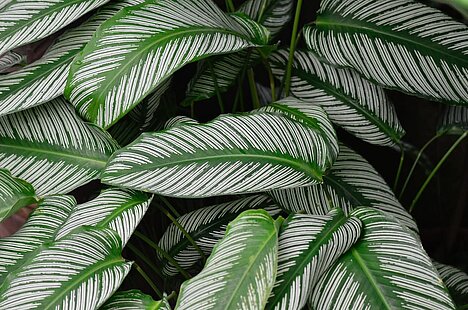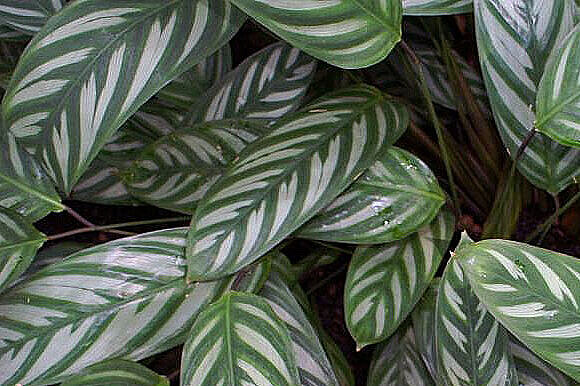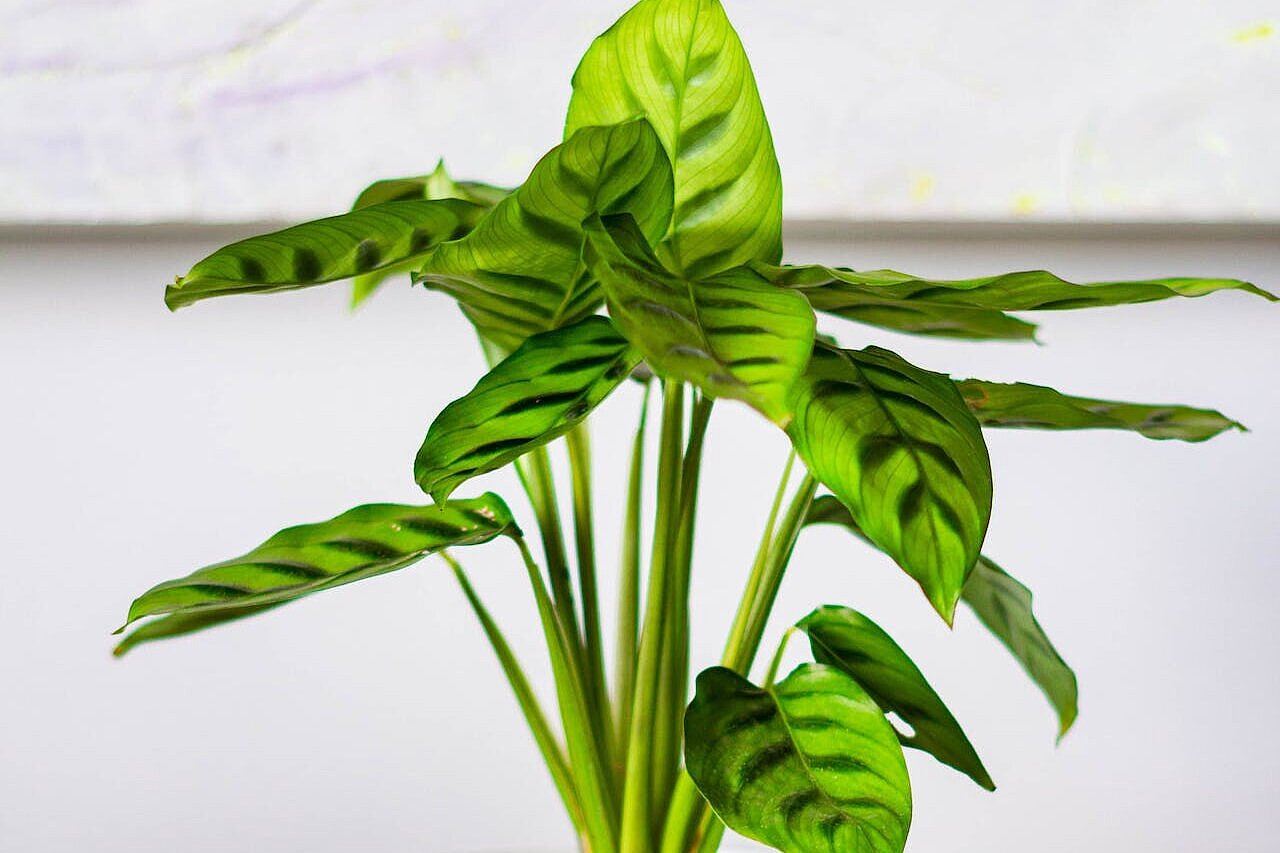Calathea vittata

Why is Calathea vittata suitable for dog owners?
Calathea vittata is a non-toxic houseplant that cannot harm cats or other pets. It even contains substances that have been used to neutralize arrow poison. This means that you don't have to worry if your dog nibbles on the plant or knocks it over. Of course, you should still make sure that your dog doesn't bother or damage the plant too much.
How do you look after Calathea vittata properly?
Calathea vittata is a relatively easy plant to care for, but it does have some requirements in terms of its location and substrate. Here are some tips on how to keep your Calathea vittata happy:
- Place the plant in a bright spot, but avoid direct sunlight. Too much light can lead to brown spots on the leaves.
- Water the plant regularly, but not too much. The soil should always be slightly moist, but never wet or dry. It is best to use soft water or rainwater.
- Ensure high humidity by spraying the leaves regularly or placing the plant in a bowl filled with gravel. You can also rinse the plant in the shower from time to time, but make sure the pot doesn't get wet.
- Fertilize the plant with a green plant fertilizer every two to three weeks from April to September.
- Repot the plant every two to three years in a larger pot or shorten the roots. Use a loose and well-drained substrate with a high peat content.
- Cut off brown or damaged leaves close to the ground with sharp scissors. Pruning is otherwise not necessary.
Calathea vittata is a beautiful and uncomplicated houseplant for dog owners. It is non-toxic, air-purifying and has fascinating foliage. With a few simple care tips, you can enjoy this plant for a long time and give your home a tropical flair.
Properties 2
Are you looking for other ingredients with a specific property?
Just click on them to find more.
If you notice any signs of hypersensitivity or poisoning in your dog, you should see your vet immediately. We are not a substitute for a vet, but we try to be as accurate as possible. Every dog reacts differently and we recommend you get a second opinion or consult your vet if in doubt.
Stay healthy and take good care of your four-legged friend!😊
Similar to Calathea vittata
The good news is: Calathea burle-marxii is not poisonous to dogs. The plant does not contain any harmful substances that could lead to symptoms of poisoning in dogs. However, this does not mean that...
Calathea oppenheimiana is also known as arrowroot or basket marant. It has egg-shaped, long-stalked leaves that shine in various shades of green and are patterned with dark green stripes and reddish...
Calathea sanderiana is one of the few houseplants that is completely non-toxic to dogs. It does not contain any harmful substances that could lead to symptoms of poisoning. On the contrary, it even...
Calathea zebrina is an evergreen perennial that grows from rhizomes and reaches a height of up to one meter. The leaves sit on long, fleshy stems and are oblong-oval in shape. They can grow to over...



